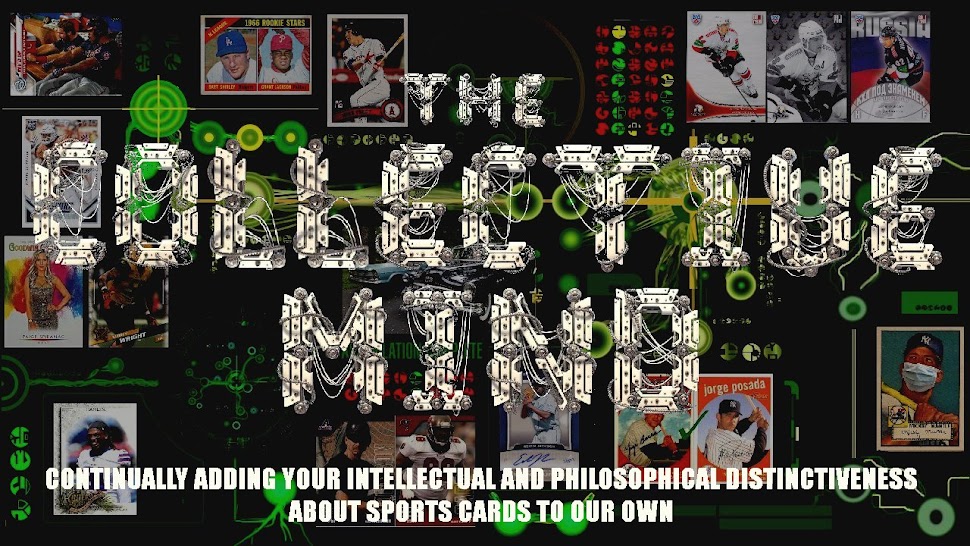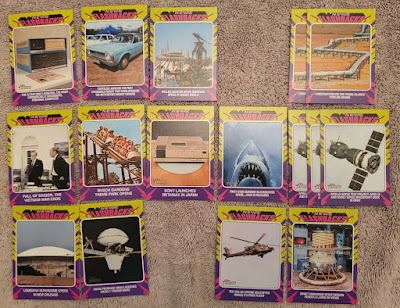I've been thinking about this post for a long time, probably since I re-entered the hobby in the early 2000's, or at least since the Boom after the pandemic. Mike from the Junk Wax Hero YouTube channel inspired me to write it after his video asking if grading was a scam. I actually wrote this post a long time ago, but never published it apparently. Might post that as a follow up.
My collecting style doesn't lend itself to grading in the first place. I'm an old school set builder with tons of player collections and miscellaneous pursuits that all tend to pull in tons of bulk cards that are generally cheap. I do have vintage sets, including the superstars, and the most expensive ones are kept in [the wrong kind of] holders separate from the binders or boxes containing the rest of the set. The only ones that I've bought graded specimens of are my T205's. (I did pick up a '57 Willie Mays this year, but only because the price was too good to pass up.)
I do think grading is useful for buying a card that you can't look at in person, and for authentication purposes (like my T205's), but that has it's flaws too.
So I won't say I'm totally against grading. I actually submitted my first card for grading through COMC. (It's one I was selling for a friend.) But I have some major problems with many of the facets of that part of the hobby. I'll try to illustrate them here.
Free The Prisoners - Slabs
Every graded card is imprisoned in a plastic shell, never to be touched, held, or smelled again. At least with vintage cards, the smell is part of the appeal! Plus, now you have to get a whole new set of storage supplies - bags, boxes and rubber bumpers. And you can't put them in binders [very well], which is my favorite way to see them.
Say No To Crack - Inconsistency
The fact that someone can submit a card, get it back, be unsatisfied with the grade, and crack it out of the slab and send it back in (and sometimes get a much different grade), from the same company or a different one - kinda invalidates the authority of the grading companies. If grading is supposed to be the final answer, then the answer should be the same. But it isn't. And it can be many reasons: The amount of submissions someone makes, the mood of the grader that particular day, and simply the subjectivity of the human who's determining the grade.
And they should require that any card removed from a slab be un-registered! They're not, so that means the population reports are inaccurate. Speaking of which...
It Doesn't Add Up - Population Reports
The idea that the current number of a certain card that has been graded affects the value is ludicrous to me. Now, if it's some pre-war scarce vintage issue then maybe. But to say that something like a regular Topps issue card jumps in value because there have only been 12 of them that got a certain grade is ignoring so many factors. My idea of the population report is that it's the count of people who decided to grade that card, with that particular company, and got that particular grade. There are too many almost arbitrary decisions involved there. It is NOT an indication of how many cards exist in the world in that condition - just how many that company has slabbed so far, which should have nothing to do with the value.
Pump It Up - The Inflated Prices
This is the most illogical part of it for me. Let me try to explain how I think about it.
This is a "raw" 1975 Topps Nolan Ryan. Card number 500. It is well centered, has sharp corners, and has nice color and eye appeal. Without subjecting it to extreme magnification, or really anything more than casual scrutiny, I would say this was almost mint condition.
If you look at current copies for sale in similar condition on COMC, you see that the best ones are running about $40 to $50.
The left and center ones are on sale from $40+, and are better looking than the highest priced one on the right (at least the scans are better - an extra service by the site). But in general, the going price for a great condition '75 Ryan is around the $50 range.
Now, at least in my mind, the purpose of grading is to "certify" that the card is in that particular condition. Mint, NrMt/Mt, Near-Mint, ExMt, Excellent, Very Good, Good, Fair, and Poor. Numeric values are assigned to the different condition levels - some of which are expanded to fill a ten point scale, or even farther to fill a twenty point scale (with .5 scores in between).
"Raw" cards have always been priced by condition - all the way back since the days when the Beckett book was still the authority on card values. (Some people still do, but they're living in the past.) The book listed two or three price values, but always had the chart to calculate the values for the conditions in between. The High book column was the full retail price. The Low column was the lowest price one could find if they dug deep and shopped around. Most dealers quoted the High book price when selling a card - usually without much modification.
Essentially, the High book price was the value of a specimen of that card in the nicest condition.
Therefore, I think it is logical to say, (and I always have), that the value of a "10" should be no more than the high book value of the raw card. Translated to today, that would be the average eBay or COMC sale price of the ungraded card in similar condition.
Lately, I've considered backing that down slightly to maybe a 9, since the companies are far stricter in giving 10's. (At least PSA is.)
Because, what is really happening here?
The card starts in a certain condition.
 |
| Bet you thought is was an 8-ish |
The card is graded and therefore "certified" to be in that condition. Then it is encased to prevent damage and handling to change that condition.
Has the piece of cardboard actually changed? No.
It's the same thing - just now it's "officially" that condition.
What is the value?
To me, it should be the same as the raw value, plus maybe the cost of grading, if it's being sold.
But is this what happens? No.
Here is PSA's chart for graded '75 Ryans. You can see that a 6 is close to the real raw value of the card today. But the grades above that take massive leaps.
Now, I would concede that a 10 is probably a rarity, so that would be worth a bit more, but not OVER 500 TIMES MORE!
Even the expected 8 score is valued at TEN TIMES the value of a similar raw card as shown in the COMC listings. It makes no sense to me whatsoever.
It's a Near Mint card - officially. So the value of a Near Mint card is $__. Maybe plus the $35 for grading and if it's a 10, then what? 25% more? Where do you get the other $400 from? The prestige of PSA grading?
Let's look at a couple other examples....
Low and High prices of 2006 Topps Derek Jeter on COMC - from $1 to $6.23. 28 of them.
Now modern cards should basically be almost perfect, right? So 10's shouldn't be that much higher....
Well, they're charging $90 above the price of the card itself. Or, let's do the math to add the grading cost and Gem 10 premium. ($6 + $35) * 1.25 = $51.25. Still just half...
And on to the ridiculous:
1987 Topps Mark McGwire - COMC starts just over a dollar. There are over 1000 listings. Highest is $21. (Wish that guy luck). Junk wax star - Nobody should price this over three to five bucks, right?
Survey said .... Bzzzzt!
Two hundred and twenty something more? Child Please. They are nowhere near rare. And 10's can't be that tough to find.
But maybe there is hope....
I think these people are starting to figure it out...
I used to think (and see) that every graded card was inflated to several times the price of the ungraded card no matter what the score. Lately, I have observed that there are slabbed copies available for about the same as a decent copy of the unburdened one. So hopefully, we are seeing the end of these massively boosted price tags. But it might put the auction houses out of business.
In conclusion, grading isn't going anywhere. There are too many collectors who only do high end cards and want them all graded. And that's OK. I will never be one of them. There's room for everyone in the hobby. And I'm not such a puritan that I won't take advantage of an increased price on the rare occasion that I'm trying to sell a card.
I do believe that there is a faction of people out there who are sickeningly rich who manipulate these prices among themselves. The prices aren't real. But the Gem 10's keep selling.
I'll stick with raw cards in quarter and dollar boxes and stars at reasonable prices, thanks. Collect what you like.
Just don't grade ALL the cards, please....











































